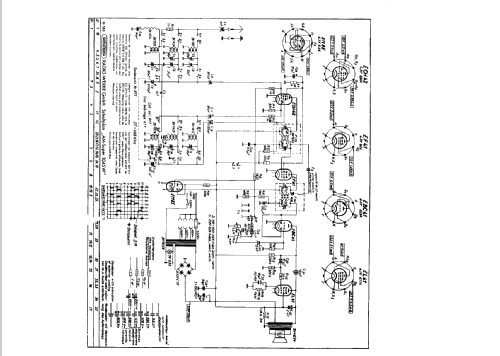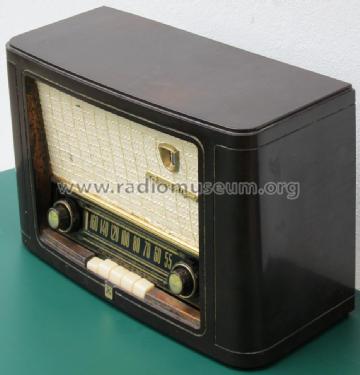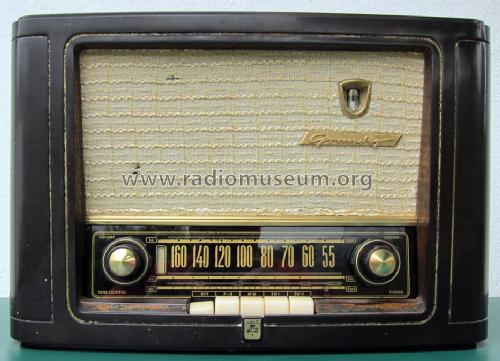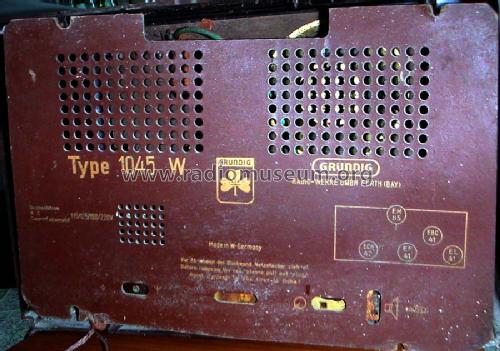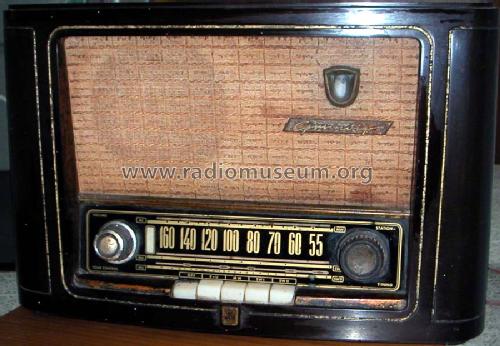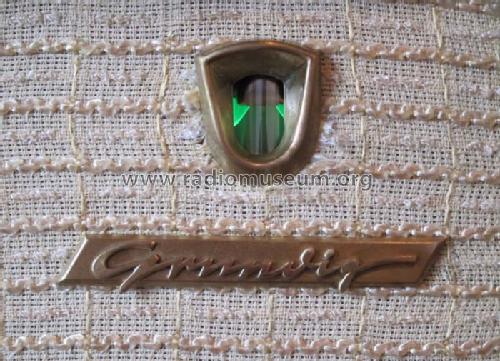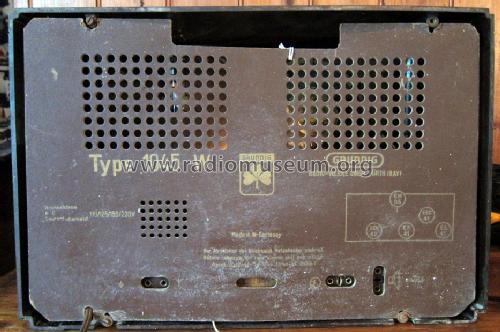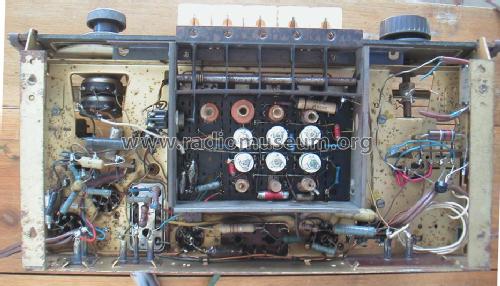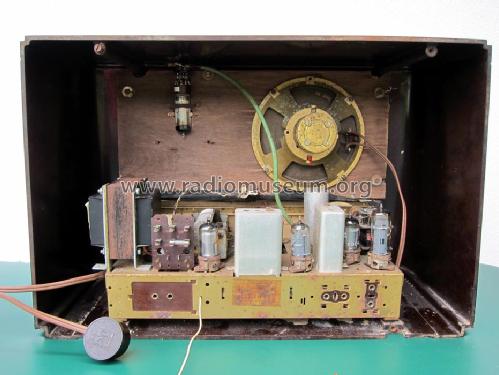- País
- Alemania
- Fabricante / Marca
- Grundig (Radio-Vertrieb, RVF, Radiowerke); Fürth/Bayern
- Año
- 1954/1955
- Categoría
- Radio - o Sintonizador pasado WW2
- Radiomuseum.org ID
- 87102
-
- alternative name: Grundig Portugal || Grundig USA / Lextronix
Haga clic en la miniatura esquemática para solicitarlo como documento gratuito.
- Numero de valvulas
- 5
- Numero de transistores
- Semiconductores
- B250C75
- Principio principal
- Superheterodino en general; ZF/IF 468 kHz; 2 Etapas de AF; Modelo de Exportacion
- Número de circuitos sintonía
- 6 Circuíto(s) AM
- Gama de ondas
- OM y dos OC
- Tensión de funcionamiento
- Red: Corriente alterna (CA, Inglés = AC) / 110; 125; 150; 220 Volt
- Altavoz
- Altavoz dinámico (de imán permanente)
- Material
- Madera
- de Radiomuseum.org
- Modelo: 1045W - Grundig Radio-Vertrieb, RVF,
- Forma
- Sobremesa de botonera.
- Ancho, altura, profundidad
- 463 x 304 x 215 mm / 18.2 x 12 x 8.5 inch
- Anotaciones
- Exportgerät
Wellenbereiche:
MW: 510-1620 kHz
SW1: 2-6 MHz
SW2: 6-17 MHz
- Mencionado en
- -- Original prospect or advert
- Autor
- Modelo creado por Carlos A. Pieroni-García. Ver en "Modificar Ficha" los participantes posteriores.
- Otros modelos
-
Donde encontrará 6218 modelos, 5451 con imágenes y 4214 con esquemas.
Ir al listado general de Grundig (Radio-Vertrieb, RVF, Radiowerke); Fürth/Bayern
Contribuciones en el Foro acerca de este modelo: Grundig Radio-: 1045W
Hilos: 1 | Mensajes: 8
Fellow Radiophiles,
I am making good progress in the restoration of the Grundig 1045 that belonged to Andre de Melo in my youth. His son Fernando owns it now, and my restoration preserves the radio and fond memories with these friends. I remember hearing this radio during the late 1960's, while it played the soccer broadcast in the tavern that Andre owned next to his general store.
After replacing the rotted out power transformer with a replacement that was given to by RMORG member Ross Hochstrasser, and replacing three resistors and the original electrolytics, the radio is working again. I have another couple of weeks while I am in vacation at Furnas in the Azores to check out it's performance. The only weak tubes were the IF and tuning eye, but I replaced all just the same, while keeping the non-original old ones with the radio.
Ross also supplied me with a set of original knobs, which look great on the radio. I cleaned the three front brass pieces with the american Twinkle copper cleaning creme.
I have two questions:
1-What protective finish should I apply to the brass pieces in this very humid climate?
2-How should have remove the speaker cloth for cleaning?
Is the glue a contact type that softens with alcohol or acetone, or is it a wood glue that would soften with white vinegar and water?
Perhaps the cloth can be cleaned in place, but how?
Is there a danger of shrinkage? As seen in this photo, some shrinkage can be tolerated.
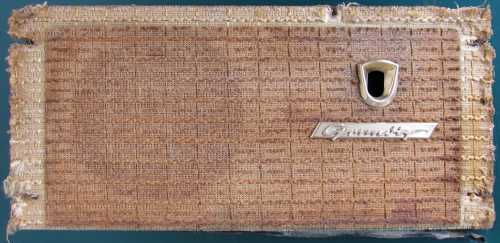
Regards,
-Joe
Joe Sousa, 22.Jul.10
